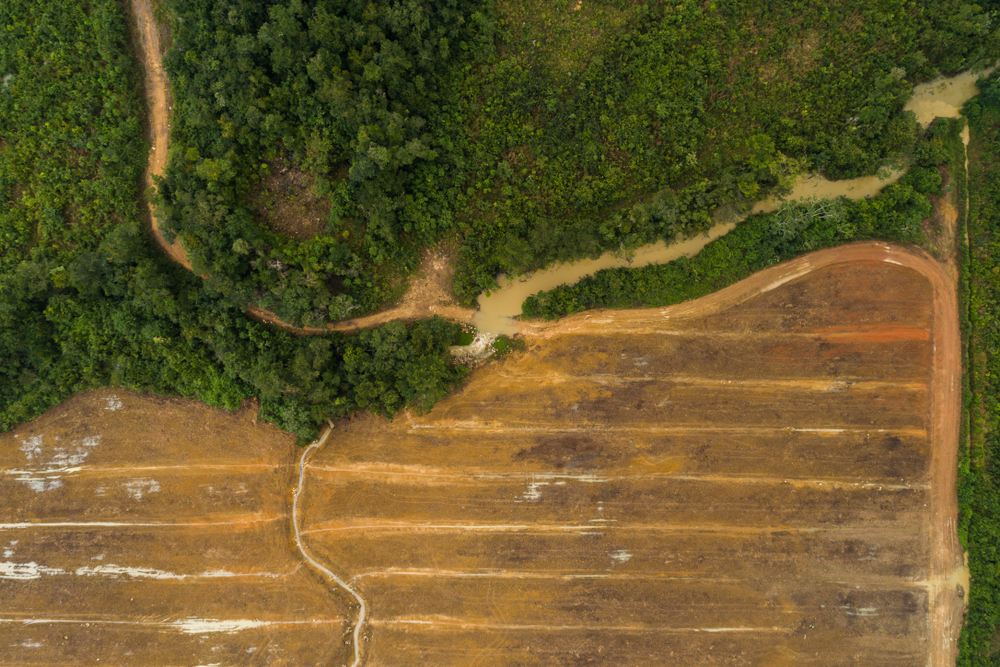Environment: Environmental Issues
Mexico is facing many environmental issues, many of which result from rapid industrialization and economic growth. These issues significantly impact the country's ecosystems, communities, and overall quality of life.
- Deforestation: Mexico has a high rate of deforestation, as forests are cleared for agriculture, urban development, and other purposes. This results in the loss of habitat for wildlife, reduced water quality, and increased carbon dioxide emissions. The creation of the Monarch Butterfly Biosphere Reserve in Michoacán is an example of Mexico's efforts to address deforestation and protect the habitat of this iconic species.
- Water pollution: Mexico's industrialization has increased water pollution, particularly in rivers and lakes. This has resulted in reduced water quality and the loss of aquatic life, as well as impacts on human health and local economies that depend on fishing and other water-based activities.
- Air pollution: Mexico's cities are plagued by high levels of air pollution, linked to respiratory and other health problems and climate change. Mexico City is one of the most polluted cities in the world, and air quality there has been a significant concern for decades.
- Soil contamination: Mexico's rapid industrialization has led to widespread soil contamination due to toxic chemicals in agriculture and other industries. This has resulted in reduced agricultural productivity and can also pose health risks to humans and wildlife.
- Waste management: Mexico is facing a growing waste management crisis as the amount of waste generated by its rapidly growing population continues to increase. This has led to large landfills and informal dump sites, which can result in water and soil pollution and release harmful gases.
- Loss of biodiversity: Mexico is one of the world's most biodiverse countries, but this biodiversity is threatened by habitat destruction, overexploitation, and other environmental pressures. Mexico has several essential conservation areas, but more action is needed to protect its unique ecosystems and the species they support.
Mexico's environmental challenges are significant, but many efforts are underway to address them. From conservation initiatives to policies aimed at reducing pollution and waste, there is hope that Mexico can create a more sustainable future for its people and its ecosystems.
Deforestation
Deforestation in Mexico is a growing concern, significantly impacting the country's environment and ecosystems. It is a result of human activities such as agriculture, logging, and urbanization. Here are some of the significant effects of deforestation in Mexico:
- Loss of biodiversity: Deforestation leads to the destruction of habitats, reducing the number of species in an area and reducing biodiversity. The destruction of the Mexican tropical rainforests has led to the decline in populations of species such as the jaguar, tapir, and several species of primates.
- Impacts on indigenous communities: Deforestation can also significantly impact indigenous communities, as it destroys their traditional habitats and disrupts their livelihoods. In Mexico, many indigenous communities rely on the forest for subsistence, and the destruction of the forest can result in a loss of food and other resources.
- Reduced carbon sequestration: Trees play a crucial role in sequestering carbon from the atmosphere, which helps mitigate the effects of climate change. The loss of trees through deforestation reduces the ability of an ecosystem to store carbon, leading to increased atmospheric carbon dioxide levels. In Mexico, widespread deforestation has contributed to rising atmospheric carbon dioxide levels and associated environmental impacts.
- Soil erosion: Deforestation can cause soil erosion, as vegetation removal leaves the soil exposed to the elements. This can result in decreased soil fertility and reduced agricultural productivity. In Mexico, soil erosion resulting from deforestation has contributed to degraded agricultural lands and reduced yields for farmers.
- Impacts on water cycles: Deforestation can also affect water cycles, as trees are essential in maintaining water quality and availability. The loss of trees can result in decreased rainfall and changes in river flows, impacting water availability and affecting local communities. In Mexico, deforestation has caused water availability and quality changes, impacting communities that rely on water for drinking, agriculture, and other purposes.
- Increased flooding: Deforestation can increase the risk of flooding, as vegetation removal can cause increased runoff and erosion. This can result in damage to homes, infrastructure, and agriculture. In Mexico, increased flooding has been reported in areas affected by deforestation, causing significant damage to homes, businesses, and infrastructure.
In conclusion, deforestation in Mexico has far-reaching impacts on the country's environment and people. Implementing measures to reduce deforestation and promote sustainable land use practices to protect the country's ecosystems and biodiversity is essential.
Water Pollution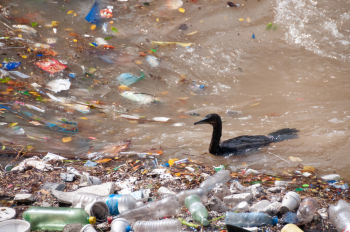
Water pollution is a major environmental issue in Mexico that seriously impacts the environment and human health. The following are some of the key effects of water pollution in Mexico.
- Loss of biodiversity: Water pollution can also harm aquatic plants and animals, leading to a loss of biodiversity in rivers, lakes, and oceans. The widespread use of pesticides in Mexico has been linked to the decline of amphibian populations, including the Atelopus zeteki, a species of harlequin toad.
- Economic impacts: Water pollution can also have significant economic impacts, as it can reduce the value of fish and other seafood and negatively impact tourism and recreation. The contamination of Mexico's Gulf of Mexico has led to the closure of commercial and recreational fisheries, affecting local economies.
- Decline in tourism: Water pollution can also affect the tourism industry in Mexico, as beaches and other recreational areas can become contaminated and unsafe for swimming and other activities. The contamination of Cancun beaches due to sewage discharge has had a negative impact on the local tourism industry.
- Reduced agricultural productivity: Water pollution can also impact agricultural productivity in Mexico, as contaminated water sources can harm crops and reduce yields. The contamination of irrigation water with agricultural chemicals and other pollutants has led to reduced crop yields and economic hardship for farmers in some regions.
- Impacts on aquatic life: Water pollution can significantly impact aquatic life in Mexico. The presence of toxic substances and pollutants, such as agricultural runoff and sewage discharge, can harm or kill species such as the Gulf grouper, an important fishery species in the Gulf of Mexico, disrupting the balance of aquatic ecosystems.
- Groundwater contamination: Water pollution can contaminate Mexico's groundwater, a critical drinking water source for many communities. For example, groundwater contamination in the states of Sonora and Sinaloa by illegally dumping hazardous waste has decreased access to clean water and increased health risks for local communities.
In conclusion, water pollution is a serious issue in Mexico that has far-reaching impacts on the environment and human health. Water pollution is a threat that needs to be addressed, from the decline in aquatic life and impacts on biodiversity to the reduction of agricultural productivity and increased health risks for communities. Addressing this issue requires a comprehensive and coordinated approach involving government and community action. This includes implementing effective regulations and monitoring systems, promoting sustainable practices and alternatives, and investing in technology and infrastructure to prevent and treat water pollution. With continued efforts and commitment, it is possible to reduce the impacts of water pollution and ensure a healthier and more sustainable future for Mexico and its people.
Air Pollution 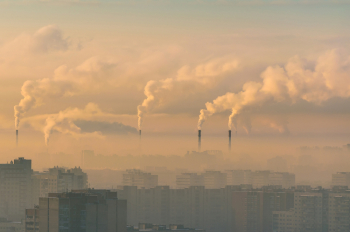
Air pollution has become a major environmental issue in Mexico, causing various negative impacts on the environment and human health. Some of the acute effects of air pollution include:
- Damage to crops and livestock: Air pollution can also harm crops and livestock in Mexico, reducing agricultural productivity and leading to economic losses for farmers. High air pollution levels in Mexico, Puebla, and Hidalgo have been linked to decreased crop yields and reduced livestock health.
- Acid rain: Air pollution can also lead to acid rain in Mexico, which can harm forests, lakes, and other natural areas and make it difficult for plants and animals to survive. Acid rain in Mexico, Veracruz, and Oaxaca has been linked to forest die-offs and decreased biodiversity in these areas.
- Climate change: Air pollution is also a significant contributor to climate change in Mexico, as greenhouse gases emitted from cars, factories, and other sources contribute to global warming and other environmental impacts. Mexico is one of the largest emitters of greenhouse gases in Latin America and is taking steps to reduce emissions and transition to renewable energy sources.
- Health impacts: Air pollution can have severe health impacts in Mexico, particularly in cities such as Mexico City, where high levels of air pollution have been linked to respiratory problems, heart disease, and other health issues. Mexico City has been ranked as one of the most polluted cities in the world, and air pollution has been linked to high rates of respiratory illnesses, such as asthma and bronchitis, in the city's residents. This is particularly concerning for vulnerable populations such as children, the elderly, and people with pre-existing respiratory and cardiovascular conditions.
- Reduced visibility: Air pollution can also reduce visibility in Mexico, making it difficult for people to see and enjoy scenic areas, such as mountains and other natural attractions. This can impact tourism and recreation in affected areas, such as the scenic colonial town of San Miguel de Allende. Visibility in Mexico City has been severely affected by high levels of smog and haze, making it difficult for residents and tourists to see and appreciate the surrounding scenery.
- Impacts on ecosystems: Air pollution can harm ecosystems and wildlife in Mexico by reducing air quality and exposing species to toxic substances. This can impact the health of plants and animals and disrupt the balance of ecosystems, particularly in areas near large cities or industrial areas. The monarch butterfly, which travels from Canada to Mexico every year, is known to be affected by air pollution in the form of reduced air quality and exposure to toxic substances. This can impact the health and survival of the species and the delicate balance of ecosystems along its migration route.
In conclusion, Mexico's air pollution significantly impacts the environment and human health. The health of individuals, ecosystems, and the economy depends on taking action to tackle air pollution in Mexico. Addressing this issue will require a comprehensive approach, including regulations, technological innovations, and changes in consumer behavior, to reduce emissions and improve air quality.
Soil Contamination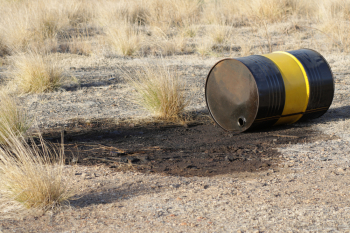
Soil contamination refers to the presence of harmful chemicals, pollutants, or other substances in the soil that can negatively impact the environment. In Mexico, soil contamination has become a severe issue due to industrial activities, agricultural practices, and other sources of pollution. The following are some of the acute effects of soil contamination in Mexico.
- Reduced agricultural productivity: Contaminated soil can reduce agricultural land productivity, making it difficult for farmers to grow crops and raising food prices for consumers. For example, contaminated soil in Mexico and Tamaulipas has reduced crop yields and decreased livestock health.
- Loss of biodiversity: Soil contamination can harm plants and wildlife, leading to biodiversity loss and the decline of ecosystems. For example, contaminated soil in the state of Veracruz has led to the death of many plants and the decline of wildlife populations.
- Health risks for humans and animals: Soil contamination in Mexico can pose serious health risks to humans and animals, as contaminated soil can contain toxic chemicals and heavy metals that can leach into groundwater and contaminate drinking water supplies. For example, high levels of lead and other harmful chemicals have been found in soil near mining operations and industrial sites in states such as Zacatecas, Durango, and Coahuila, posing a risk to local communities and wildlife.
- Impacts on soil structure: Contaminated soil in Mexico can also affect the structure and fertility of the soil, making it difficult for plants to grow and reducing the ability of the soil to retain water. For example, contaminated soil near industrial sites and landfills in Mexico City and other cities has led to reduced soil fertility and decreased ability to support vegetation.
- Water pollution: Soil contamination in Mexico can also contribute to water pollution, as contaminants can leach into rivers, lakes, and other bodies of water, affecting aquatic life and threatening the health of humans who depend on these water sources. For example, contaminated runoff from agricultural operations and industrial sites in states such as Guanajuato, San Luis Potosí, and Nuevo León has been linked to high levels of toxic chemicals and heavy metals in nearby rivers and lakes.
- Long-term effects: The effects of soil contamination in Mexico can last for many years and, in some cases, may never be fully remediated. This can have a lasting impact on the environment and the health of local communities. For example, contaminated soil near the La Oroya smelter in the state of Junín has been linked to high rates of lead poisoning and other health problems in nearby communities. The contamination may never be fully remediated.
In conclusion, soil contamination is a severe environmental problem that can negatively affect the environment and human health. These effects include health risks for humans and animals, loss of biodiversity, impacts on soil structure, water pollution, and long-term effects that may never be fully remediated. Mexico is one of the countries that is affected by soil contamination due to industrial activities, agricultural practices, and other human activities. Efforts must be made to address soil contamination and prevent further environmental and human health harm.
Waste Management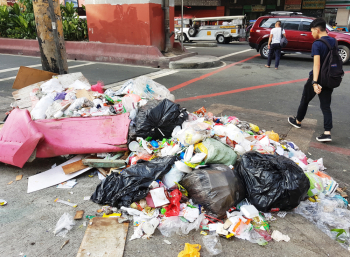
In Mexico, poor waste management practices can seriously impact the environment and public health. Improper waste disposal can lead to various environmental and health problems, including water and soil contamination, releasing toxic gases, and spreading of disease.
- Water contamination: Improper waste disposal can lead to water contamination, as pollutants from waste leach into rivers, lakes, and groundwater, affecting the health of aquatic life and the quality of drinking water. For example, the lack of proper waste management in Mexico City has led to significant water contamination in the Tula River, affecting the health of local communities and wildlife.
- Air pollution: Waste management can also contribute to air pollution, as waste releases toxic gases into the atmosphere, affecting the health of local communities and wildlife. The lack of proper waste management in Mexico City has led to high levels of air pollution, affecting the health of residents and visitors.
- Loss of biodiversity: Improper waste management can also harm wildlife and ecosystems, leading to biodiversity loss and the decline of essential habitats. The discharge of waste into coastal areas in Mexico can harm marine life and disrupt delicate ecosystems.
- Health risks: Poor waste management practices can also pose a severe health risk to humans and animals, as waste can contain harmful chemicals and pathogens that can spread disease. The lack of proper waste management in many rural areas of Mexico has led to the spreading of diseases such as cholera and dengue fever.
- Soil contamination: Waste can also contaminate soil, affecting the ability of crops to grow and posing a health risk to humans and animals. In Mexico, waste disposal practices in many areas have resulted in soil contamination, particularly near landfills and other waste disposal sites. For example, in Mexico is the Bosques de Agua Caliente neighborhood in Mexico City, where residents have reported elevated levels of lead and other heavy metals in the soil near a landfill site. This has led to concerns about local crops' safety, and the potential health risks posed to residents and their families. In response, the provincial government has addressed the issue, including relocating some residents and implementing a soil remediation plan. However, the long-term effects of the contamination on the environment and human health are still uncertain.
- Litter and visual pollution: Improper waste management can also result in debris and visual pollution, making affected areas unattractive and decreasing property values. Littering in Mexico is a common problem in many urban areas, where it can be seen on streets, sidewalks, and parks.
In Mexico, poor waste management practices have severe environmental and health impacts, including water and soil contamination, air pollution, loss of biodiversity, and health risks. Mexico must implement effective waste management strategies to reduce these impacts and protect its citizens' and ecosystems' health and well-being.
Loss of Biodiversity 
The loss of biodiversity in Mexico is a growing concern, as it can negatively impact the environment and human well-being. Biodiversity refers to the variety of life in a given ecosystem, including the different species of plants and animals and the diversity of their habitats.
- Disruptions to ecosystems: The loss of biodiversity can disrupt the balance of ecosystems, leading to declines in the populations of some species and changes in the distribution and behavior of others. The deforestation of Mexico's tropical forests is reducing the habitat of many plant and animal species, leading to declines in biodiversity and disruptions to ecosystems.
- Declines in economic activity: The loss of biodiversity can also have negative economic impacts, particularly in industries that depend on natural resources, such as agriculture and tourism. The decline of bee populations in Mexico has reduced the pollination of crops, leading to reductions in agricultural productivity.
- Reduced resilience to environmental changes: Ecosystems with high levels of biodiversity are more resilient to environmental changes, such as changes in climate and land use. The loss of biodiversity reduces the ability of ecosystems to adapt to these changes, making them more vulnerable to collapse. The destruction of Mexico's rainforests has led to soil erosion, loss of habitat for wildlife, and reductions in rainfall, affecting the resilience of the surrounding ecosystems.
- Loss of cultural and spiritual values: Biodiversity is also important for cultural and spiritual values, as many indigenous communities in Mexico deeply connect to the natural world and its species. The loss of biodiversity can diminish these communities' cultural and spiritual values and erode their sense of place and identity. The loss of traditional medicinal plants due to deforestation in Mexico has led to the loss of traditional knowledge and cultural practices among indigenous communities.
- Decline of endemic species: Mexico is home to many endemic species, meaning species found nowhere else in the world. The loss of biodiversity in Mexico can lead to the decline of these unique species, reducing their genetic diversity and making them more vulnerable to extinction. The critically endangered vaquita porpoise is only found in the Gulf of California and is threatened by overfishing and habitat loss.
- Loss of genetic diversity: Biodiversity is also important for maintaining genetic diversity within species, which is essential for their long-term survival. The loss of biodiversity in Mexico can lead to reductions in genetic diversity within species, making them more vulnerable to disease, climate change, and other environmental threats. The loss of habitat and overhunting of the jaguar in Mexico has reduced the species' genetic diversity, making it more vulnerable to extinction.
The loss of biodiversity in Mexico is a growing concern, with significant impacts on the environment, human well-being, and the economy. Implementing measures to protect and restore ecosystems to address this issue is essential, such as reducing deforestation and protecting wildlife habitat. This will help ensure biodiversity preservation for future generations and the continued provision of vital ecosystem services.
Copyright © 1993—2024 World Trade Press. All rights reserved.

 Mexico
Mexico 